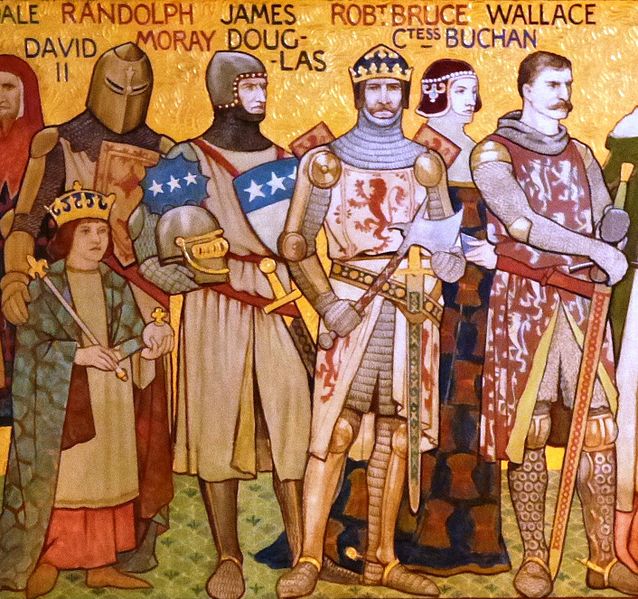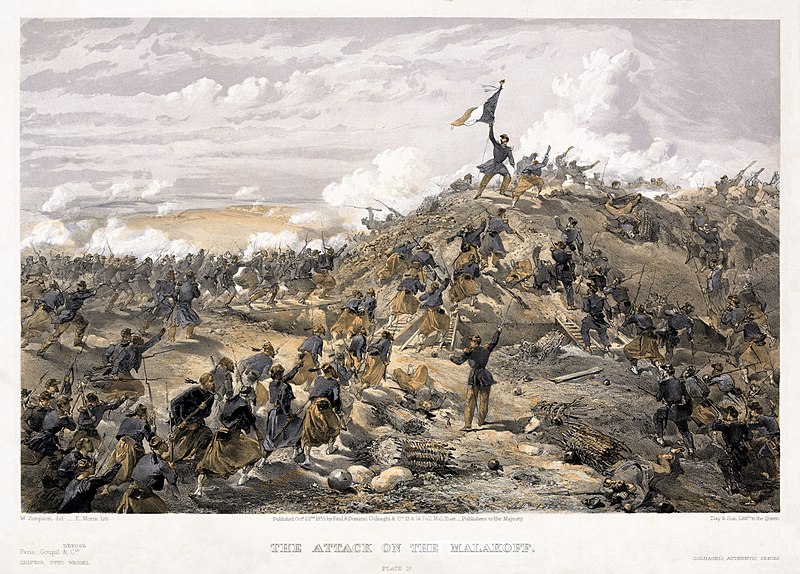March 30th marks a day of diverse historical significance, weaving through the fabric of time from ancient astronomical achievements to modern legislative actions. This date captures the essence of human progress and the complexities of our shared past.
From the first sighting of Halley’s Comet in 240 to the enactment of significant legal frameworks in 2006, each event showcases a facet of humanity’s journey—be it through conflict, discovery, innovation, or the quest for justice.
This article highlights twenty pivotal occurrences on March 30th, offering a snapshot of the moments that have contributed to shaping our world.
March 30th Events in History
240: 1st recorded perihelion passage of Halley’s Comet
Halley’s Comet is perhaps the most famous comet, known for its periodic appearances visible from Earth every 74-79 years. The comet’s recorded history dates back to ancient times, with its presence noted by astronomers around the world.
Also Read: March 29 – On this Day in History
The year 240 marks the first recorded perihelion passage of Halley’s Comet, as identified by Edmund Halley in 1705. Using historical records, Halley deduced that the appearances of the comet in 1531, 1607, and 1682 were of the same comet and successfully predicted its return in 1758.
1282: The people of Sicily rebel against the Angevin king Charles I, in what becomes known as the Sicilian Vespers
The Sicilian Vespers refers to a rebellion that occurred on Easter Monday, March 30, 1282, against the rule of the Angevin king Charles I over the Kingdom of Sicily.
The rebellion was sparked by an incident outside the Church of the Holy Spirit in Palermo, leading to a massacre of French inhabitants throughout Sicily.
Also Read: March 31th Events in History
This uprising effectively ended Angevin rule and led to the establishment of the Aragonese dynasty on the island. The event has been romanticized in literature and music, symbolizing the Sicilian desire for independence.

1296: Edward I sacks Berwick-upon-Tweed, during armed conflict between Scotland and England
During the armed conflicts between Scotland and England known as the Scottish Wars of Independence, King Edward I of England captured the Scottish town of Berwick-upon-Tweed on March 30, 1296.
This event was marked by a massacre of the town’s inhabitants and is considered one of the darkest episodes in Anglo-Scottish history. The sack of Berwick was part of Edward I’s campaign to subjugate Scotland and assert English dominance over the British Isles.
1533: Thomas Cranmer becomes Archbishop of Canterbury
Thomas Cranmer, a leader of the English Reformation and a close advisor to King Henry VIII, was consecrated as the Archbishop of Canterbury on March 30, 1533.
Cranmer’s tenure as archbishop was notable for his role in the annulment of Henry’s marriage to Catherine of Aragon, which led to the Church of England breaking away from the Roman Catholic Church.
He was instrumental in establishing the doctrinal foundations of the Church of England, including the Book of Common Prayer.
1603: Battle of Byeokjegwan: Chinese forces defeat the Japanese in Korea
This event refers to a military engagement that took place during the Japanese invasions of Korea (1592-1598), a conflict initiated by Toyotomi Hideyoshi’s attempt to conquer Korea and move on to China.
The specific battle of Byeokjegwan, however, is less well-documented in historical sources compared to other battles of this war. It’s possible there might be a confusion or misinterpretation regarding the event’s name or its significance.
The Japanese invasions of Korea were characterized by numerous battles, sieges, and naval engagements, with significant involvement from Chinese forces coming to aid Korea. The conflict eventually ended with Japan’s withdrawal from Korea, largely due to the death of Hideyoshi and the stalwart Korean naval resistance led by Admiral Yi Sun-sin.
1822: The Florida Territory is created in the United States
After Spain ceded Florida to the United States as part of the Adams-Onís Treaty in 1819, it took effect in 1821. Following the transfer, the U.S. established the Florida Territory on March 30, 1822.
This territorial establishment was a significant step towards the organization and integration of Florida into the United States, setting the stage for its eventual statehood in 1845.
The period of territorial status was marked by conflicts with Native American tribes, particularly the Seminoles, leading to several Seminole Wars, as well as efforts at development and settlement by Americans.
1842: Ether anesthesia is used for the first time, in an operation by the American surgeon Dr. Crawford Long
On March 30, 1842, Dr. Crawford W. Long of Jefferson, Georgia, used ether for the first time as an anesthetic during surgery. This groundbreaking event marked the beginning of modern anesthesiology, fundamentally changing medical surgery by allowing patients to undergo procedures without the pain they would otherwise experience.
The use of ether as an anesthetic paved the way for more complex and less painful surgical procedures, significantly improving patient care and surgical outcomes.
Despite Dr. Long’s pioneering use of ether, it was not until 1846 that the practice gained widespread attention after a public demonstration by dentist William T.G. Morton in Boston.

1856: The Treaty of Paris is signed, ending the Crimean War
The Treaty of Paris, signed on March 30, 1856, marked the end of the Crimean War (1853-1856), a conflict in which the Ottoman Empire, France, Britain, and Sardinia opposed Russia. The war was notable for its intense battles, horrendous siege conditions, and the significant loss of life from combat, disease, and cold.
The treaty required Russia to surrender territory, recognize the neutrality of the Black Sea (prohibiting its militarization), and respect the independence and territorial integrity of the Ottoman Empire.
The Crimean War is often remembered for the pioneering work of Florence Nightingale in nursing and the use of modern war reporting.
1863: Prince Wilhelm Georg of Schleswig-Holstein-Sonderburg-Glücksburg is chosen as King George I of Greece
Prince Wilhelm Georg was elected King of the Hellenes under the regnal name George I on March 30, 1863, after the deposition of King Otto of Greece. His election was the result of the London Conference of 1832, which established a monarchical order in Greece under the protection of the Great Powers (Britain, France, and Russia).
King George I’s reign, lasting until his assassination in 1913, was marked by modernization efforts, territorial expansion, and the establishment of a stable constitutional monarchy in Greece. His ascension to the throne symbolized the end of a national crisis and the beginning of a new era for Greece.
1867: The United States purchases Alaska from Russia for $7.2 million, about 2 cent/acre ($4.74/km²), an event later commemorated as Seward’s Folly
Known as “Seward’s Folly” due to initial public skepticism about its value, the United States agreed to purchase Alaska from Russia for $7.2 million on March 30, 1867. This acquisition, negotiated by Secretary of State William H. Seward, amounted to roughly 2 cents an acre.
The purchase was motivated by Russia’s desire to sell its Alaskan territory, fearing loss to Britain in any future conflict, and by America’s interest in expanding its territory, resources, and influence. Alaska proved to be a valuable asset due to its vast natural resources, including timber, oil, and gold, which were discovered later.
1870: The 15th Amendment to the United States Constitution, granting African-American men the right to vote, is declared ratified
Ratified on February 3, 1870, and certified on March 30, 1870, the 15th Amendment granted African-American men the right to vote by stating that the “right of citizens of the United States to vote shall not be denied or abridged by the United States or by any State on account of race, color, or previous condition of servitude.”
This amendment was a monumental step in the struggle for civil rights in the United States, coming on the heels of the Civil War and during the Reconstruction era, a period aimed at rebuilding the South and integrating formerly enslaved people into American society as full citizens.
Despite this legal protection, many African-American voters were effectively disenfranchised for decades due to state-imposed obstacles like literacy tests, poll taxes, and other discriminatory practices that were not fully addressed until the Voting Rights Act of 1965.
1912: France establishes a protectorate over Morocco
On March 30, 1912, the Treaty of Fez was signed, under which Sultan Abdelhafid of Morocco agreed to allow France to establish a protectorate over most of Morocco, marking a significant moment in the scramble for Africa by European powers.
This arrangement gave France control over Moroccan foreign relations, military matters, and administration, while nominally preserving the sovereignty of the Sultan and the Moroccan monarchy.
The establishment of the protectorate was part of a larger set of agreements that also saw Spain gaining control over certain northern and southern regions of Morocco. The French protectorate over Morocco lasted until 1956 when the country regained its independence.
1939: The Heinkel He 100 fighter sets a world speed record of 746 km/h (463 mph)
On March 30, 1939, the German Heinkel He 100 fighter aircraft set a world speed record of 746 km/h (463 mph), demonstrating the rapid advancements in military aviation technology leading up to World War II.
Despite its performance, the He 100 saw limited production and did not become a mainstay of the Luftwaffe’s fighter force, partly due to political and industrial reasons within Germany. Instead, it was used primarily for propaganda purposes, with some of its achievements being attributed to the more widely known Messerschmitt Bf 109 to conceal its exi
1945: World War II: Soviet forces invade Austria and capture Vienna; Polish and Soviet forces liberate Danzig
In the final stages of World War II, the Red Army launched offensives that would lead to the capture of Vienna, Austria, on April 13, 1945, after a battle that began in late March. This offensive was part of a broader push by Allied forces into German-held territories.
Around the same time, the city of Danzig (now Gdańsk, Poland) was liberated by Polish and Soviet forces, marking the end of German occupation. These events were crucial in the downfall of Nazi Germany, leading to the eventual surrender of German forces in May 1945.
1954: The first subway in Canada opens in Toronto
On March 30, 1954, Toronto officially opened its subway system, becoming the first city in Canada with a subway. The initial line ran between Union Station and Eglinton Station, covering a distance of approximately 7.4 kilometers (4.6 miles).
The construction of the subway marked a significant moment in Toronto’s development, reflecting the city’s growth and the need for more efficient public transportation solutions.
The Toronto subway system has since expanded considerably, playing a key role in the city’s public transit infrastructure and serving as a model for other Canadian cities considering subway development.
1961: The Single Convention on Narcotic Drugs is signed at New York
On March 30, 1961, the Single Convention on Narcotic Drugs was signed in New York. This international treaty aims to prohibit the production and supply of specific (nominally narcotic) drugs except under license for specific purposes, such as medical treatment and research.
As a cornerstone of international drug control efforts, the Convention sought to consolidate previous treaties and establish a unified control system for the cultivation, production, distribution, and use of narcotics worldwide. It introduced controls over the cultivation of plants from which narcotic drugs are derived, such as the opium poppy.
The Convention has been pivotal in shaping national legislation on drug control, influencing policies and law enforcement practices around the world.
1972: North Vietnamese forces begin their Easter Offensive against South Vietnam
The Easter Offensive, launched on March 30, 1972, by North Vietnam, was a massive military campaign during the Vietnam War. It involved conventional forces in full-scale battles, unlike the guerrilla tactics previously associated with the Viet Cong.
The offensive’s goal was to strike a decisive blow against the South Vietnamese Army (ARVN) and seize territory, hoping to improve the North’s negotiating position in the peace talks. Despite initial gains, including the capture of the provincial capital of Quang Tri, the offensive was eventually repelled by South Vietnamese forces with substantial U.S. air support.
The Easter Offensive significantly influenced the course of the war, leading to increased American efforts to negotiate an end to the conflict.
1981: President Ronald Reagan is shot and wounded in an assassination attempt by John Hinckley Jr.; three others are also wounded
On March 30, 1981, John Hinckley Jr. attempted to assassinate U.S. President Ronald Reagan outside the Hilton Hotel in Washington, D.C. Hinckley fired six shots, one of which ricocheted off the presidential limousine and struck Reagan in the chest. Another bullet critically wounded Press Secretary James Brady.
Reagan survived the attack, recovering quickly and returning to his duties. This event shocked the nation and had a profound impact on the Reagan presidency, bolstering his popularity. Hinckley was found not guilty by reason of insanity and remained under institutional psychiatric care for several decades.
1993: In Peanuts, Charlie Brown hits his first home run
On March 30, 1993, an iconic moment occurred in the comic strip “Peanuts” when Charlie Brown, the perennially unlucky and downtrodden character, hit his first home run. Created by Charles Schulz, “Peanuts” is one of the most beloved and influential comic strips in history.
This particular strip was significant because it represented a rare moment of triumph for Charlie Brown, who is more often associated with failure and disappointment, especially in baseball. Schulz’s decision to let Charlie Brown succeed reflected his ability to explore complex emotions and human experiences through simple stories and characters.
2006: The United Kingdom’s Terrorism Act 2006 becomes law
Enacted on March 30, 2006, the Terrorism Act 2006 is a piece of UK legislation designed to combat terrorism. It was introduced in response to the July 7, 2005, London bombings and other global terrorist threats.
The Act includes provisions that make it an offense to encourage terrorism, disseminate terrorist publications, and prepare acts of terrorism, among others. It also controversially allows for the detention of suspects for up to 28 days without charge under certain conditions.
The Act has been the subject of debate, with supporters arguing it is necessary for national security and critics raising concerns about its impact on civil liberties and human rights.
